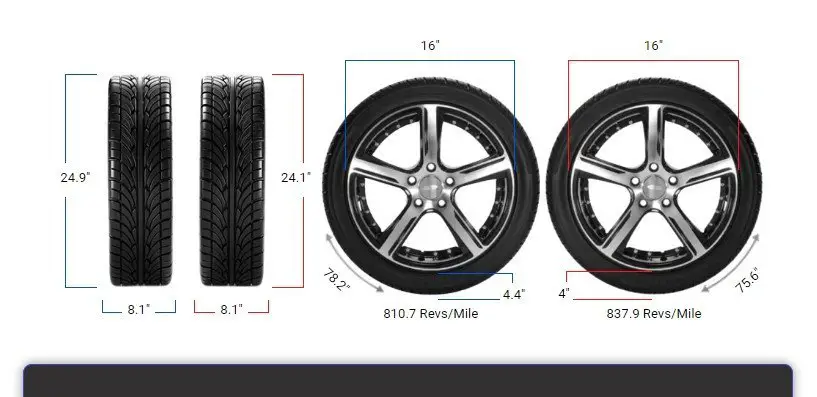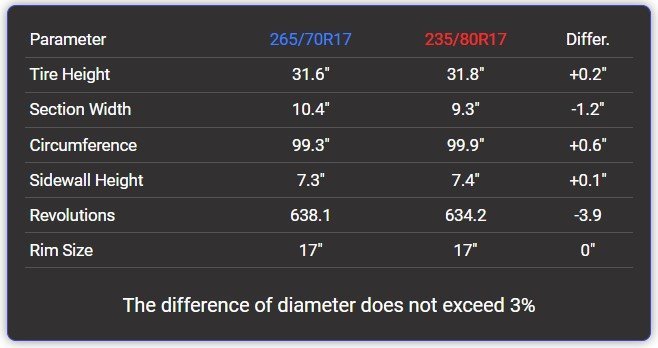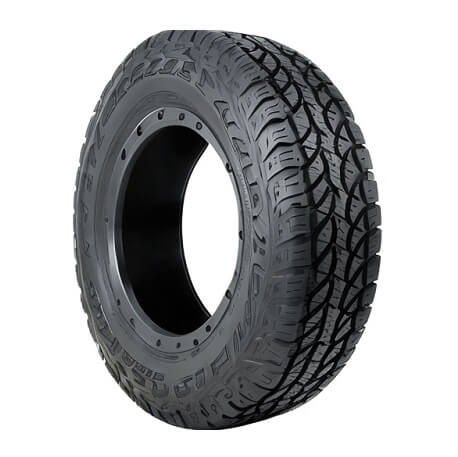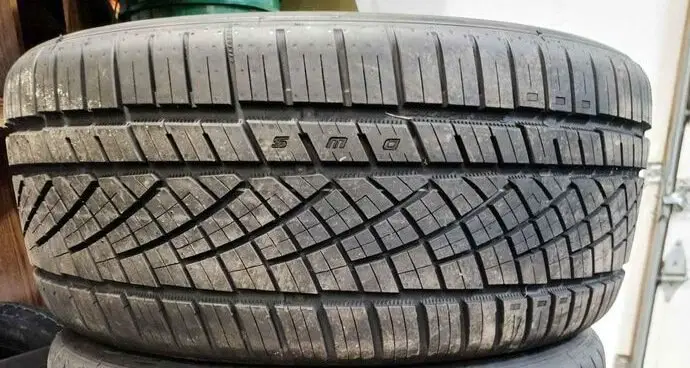Tire Size 265/70r17 vs 235/80r17

Two sizes may seem similar, there are some key differences to be aware of. We’ll dive into the details and help you make an informed decision.
- 235/80R17 tires are 1.18 inches narrower than 265/70R17 tires
- Negligible 0.1 inch increase in sidewall height with 235/80R17
- Minor improvement in fuel economy possible with narrower 235/80R17
- Slight reduction in dry grip and steering response with 235/80R17
- Small 0.6% speedometer error, reads faster than actual speed
265/70r17 vs 235/80r17

Fitment Guide
In this case, the diameter difference between 265/70R17 and 235/80R17 is only 0.6%, well within the acceptable range.
This means you can safely switch between these sizes without needing major modifications.
On-Road Impact
Switching to the narrower 235/80R17 tires can have several effects on your vehicle’s on-road performance. Here’s what you might notice:
- Fuel Economy: The narrower tires may slightly improve gas mileage due to reduced rolling resistance.
- Ride Comfort: You may experience a somewhat softer ride, as the taller sidewall of the 235/80R17 tires allows for more cushioning.
- Handling: The narrower tires could result in a minor reduction in dry road grip and steering responsiveness compared to the wider 265/70R17 tires.
- Speedometer Accuracy: Your speedometer will read about 0.6% faster than your actual speed due to the slightly taller 235/80R17 tires. At 20 mph, the difference is negligible – your speedo would read 20.12 mph.
Overall, the on-road differences between these tire sizes are fairly minimal and shouldn’t dramatically alter your driving experience.

Off-Road Impact
If you frequently take your vehicle off the beaten path, here’s what to keep in mind with the 235/80R17 tires:
- Traction: The narrower tires may provide moderately less traction in loose terrain like mud or sand compared to the wider 265/70R17 tires. However, the taller sidewall of the 235/80R17 tires can help with traction in some off-road scenarios.
- Ground Clearance: You’ll gain approximately 0.1 inches (2.5 mm) of ground clearance with the 235/80R17 tires due to their slightly taller sidewall. While not a huge difference, every little bit can help when navigating rough terrain.
- Durability: The taller sidewall of the 235/80R17 tires provides a bit more cushion to absorb impacts from rocks and obstacles, potentially improving durability in harsh off-road conditions.
As with on-road driving, the off-road performance differences between these tire sizes are relatively subtle. Your driving style and specific off-road needs will determine whether the trade-offs are worth it for you.

What is the Main Difference Between 265/70R17 and 235/80R17?
The primary difference between 265/70R17 and 235/80R17 tires is width, with the 235/80R17 being 1.18 inches narrower. The overall diameter difference is minimal at 0.6%.
Can I Use 235/80R17 Instead of 265/70R17?
Yes, you can safely use 235/80R17 tires instead of 265/70R17 since the overall diameter difference is only 0.6%, well within the acceptable 3% range for tire replacements.
How Much Taller Is a 235/80R17 Tire Than a 265/70R17?
A 235/80R17 tire is 0.2 inches taller than a 265/70R17 tire, with sidewall heights of 7.4 inches and 7.3 inches respectively – a difference of 0.1 inches.
How Much Wider is a 265/70R17 Tire Than a 235/80R17?
A 265/70R17 tire is 1.18 inches wider than a 235/80R17 tire, with widths of 10.43 inches compared to 9.25 inches – a substantial difference in width.
Our Observations
After analyzing the key differences between 265/70R17 and 235/80R17 tires, we’ve concluded that switching between these sizes is generally safe and shouldn’t noticeably impact performance in most on and off-road situations.
The 0.6% difference in overall diameter is well within the 3% guideline, and the 1.18-inch difference in width, while substantial, isn’t enough to drastically change your vehicle’s behavior.
However, if you’re happy with your current 265/70R17 tires and don’t have a compelling reason to switch, it may be best to stick with what works for you.

Meet Caitlin McCormack, a Tire Size Expert and Blogger Passionate About Everything Related to Tires. With Years of Experience in the Tire Industry, Caitlin Has Become an Expert in Tire Sizes and Their Impact on Vehicle Performance.
